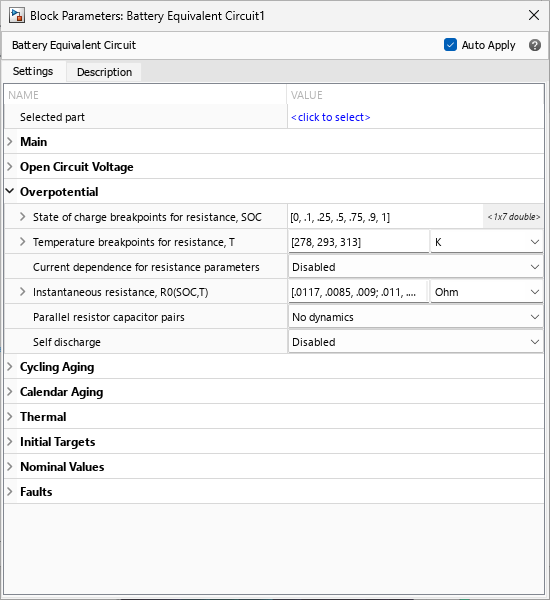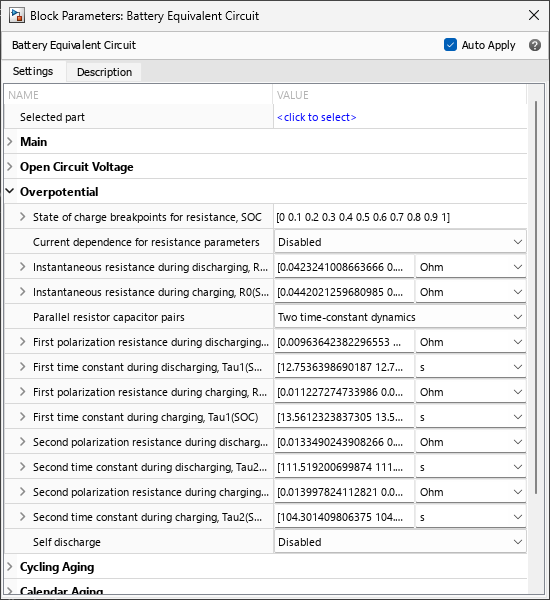parameterizeEquivalentCircuitBlock
Syntax
Description
parameterizeEquivalentCircuitBlock(
parameterizes the Battery Equivalent
Circuit block specified by the numeric handle
circuitModel,blockHandle)blockHandle using the data in the ECM object,
circuitModel.
parameterizeEquivalentCircuitBlock(
parameterizes the Battery Equivalent
Circuit block specified by the numeric handle
circuitModel,blockHandle,ParameterizePseudoOCV=true)blockHandle using the data in the ECM object,
circuitModel. This syntax also parameterizes the open-circuit voltage
of the block.
parameterizeEquivalentCircuitBlock(
parameterizes the Battery Equivalent
Circuit block specified by the numeric handle
circuitModel,blockHandle,ParameterizePseudoOCV=false)blockHandle using the data in the ECM object,
circuitModel. This syntax does not parameterize the open-circuit
voltage of the block.
Examples
Input Arguments
Version History
Introduced in R2025a
See Also
Functions
ecm|simulateCurrentPulse|mergeModelParameters|removePulseParameters|plot|simulateHPPCTest|plotModelParameters|simulateFrequencyResponse

